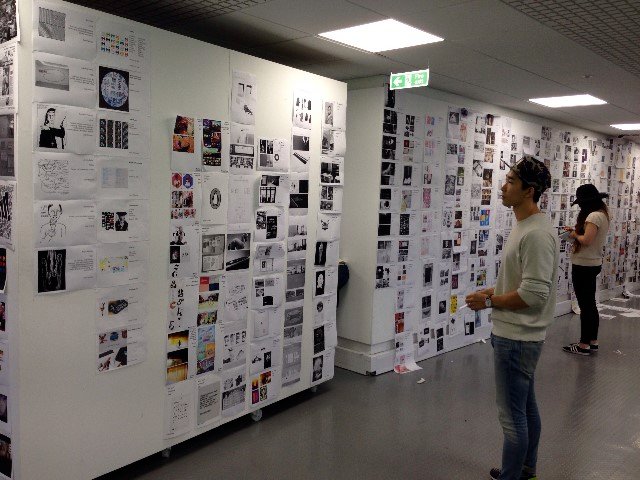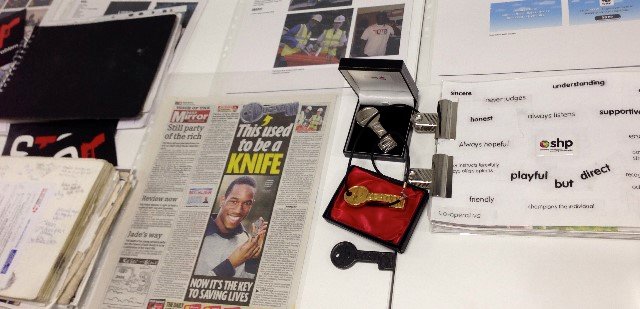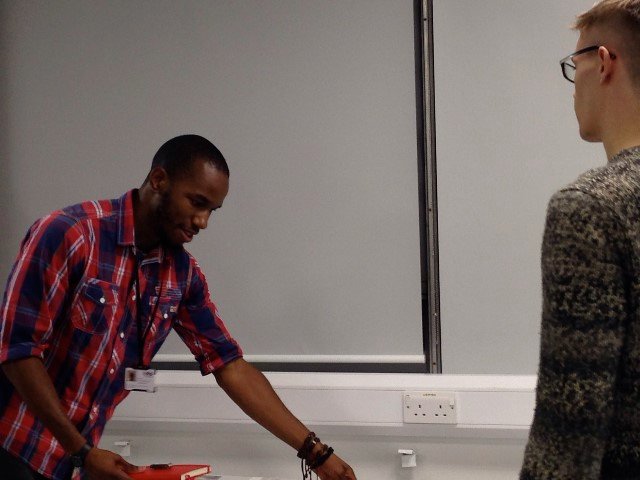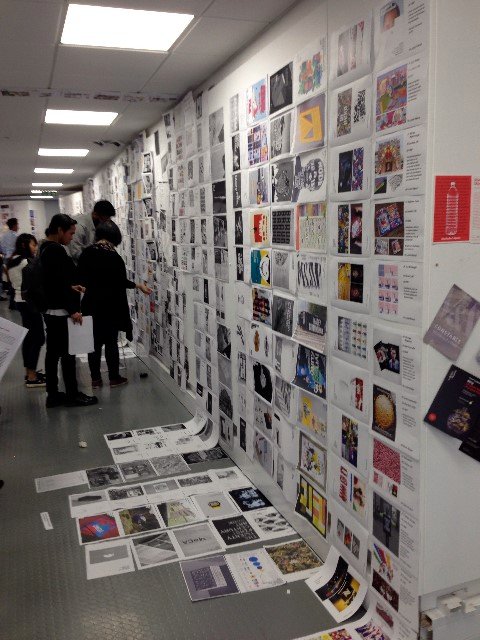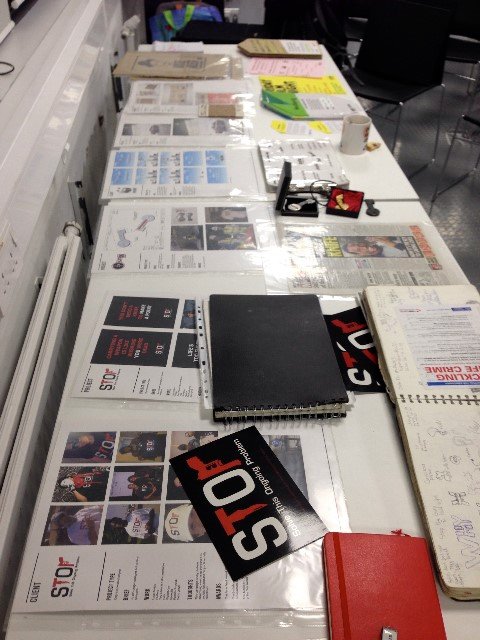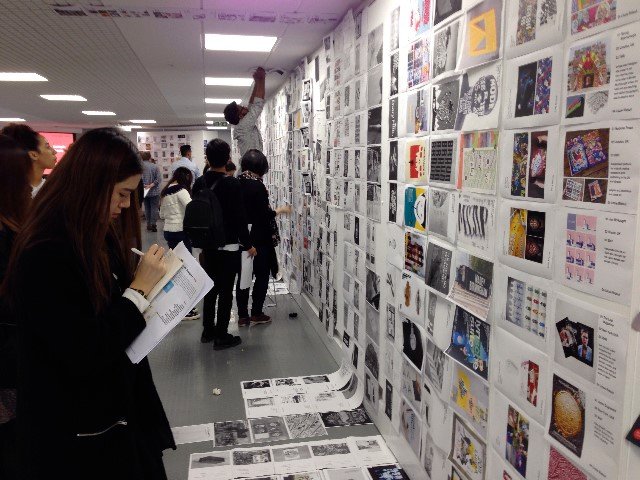Industry: We Are Watching You.
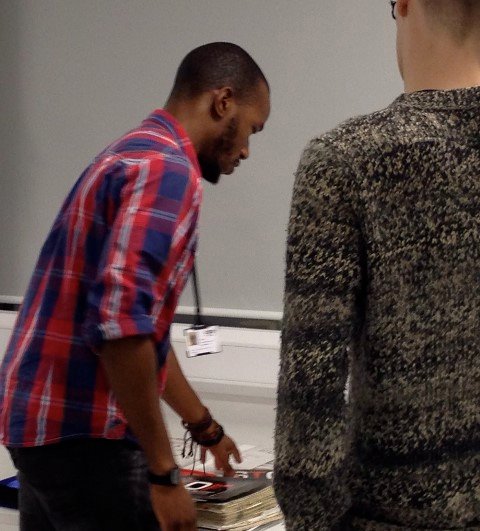
To launch the year 3 GMD Industry Practice unit, the students were asked to select and bring in a minimum of fifteen examples of work from their favourite current designer or practice. From this selection, the students also had to analyse the methodology and processes of their selected designers and identify the key skills that these creatives possess in order to make professional work and succeed within the graphic design industry. Furthermore, they had to identify who the designers are working for, in terms of market sectors and specific clients etc.
With over 130 students involved, they produced approximately 2000 examples, that were systematically pinned to the walls of the studio—the result being an impressive display of contemporary graphic design output. One purpose of the workshop was to examine the definition of the ‘graphic design industry’ and this vast ‘slice’ of the current graphic output clearly advocates the range and diversity that could now be filed under the title of graphic design.
The skills and client/market observations also provided a fascinating insight into the opinions and attitudes towards current studio requirements when planning a route into industry. Patterns and clusters emerged within the skills section and the client exposure allowed everyone to consider the wider application of the work they are now producing within the college.
The display will stay up for the duration of the unit and will provide an inspirational back drop to the discussions and debates as the students develop their own industry based projects. If we did this exercise again in six months, it would all change, some designers may be gone and some may have changed their methods but from standing in front of this display one thing is clear—at this moment in time, there are many, many designers producing credible, progressive and exciting visual communication—the competition is red hot.
Guest Speaker:
+ GMD alumni, Alex Rose, talked to 3rd year students about he applies design thinking to solving social problems, including the homeless charity where he currently works, SHP http://www.shp.org.uk/ and his London anti-knife and gun crime campaign, STOP, that he set up and which has gone on to win awards and been adopted by other UK cities.

